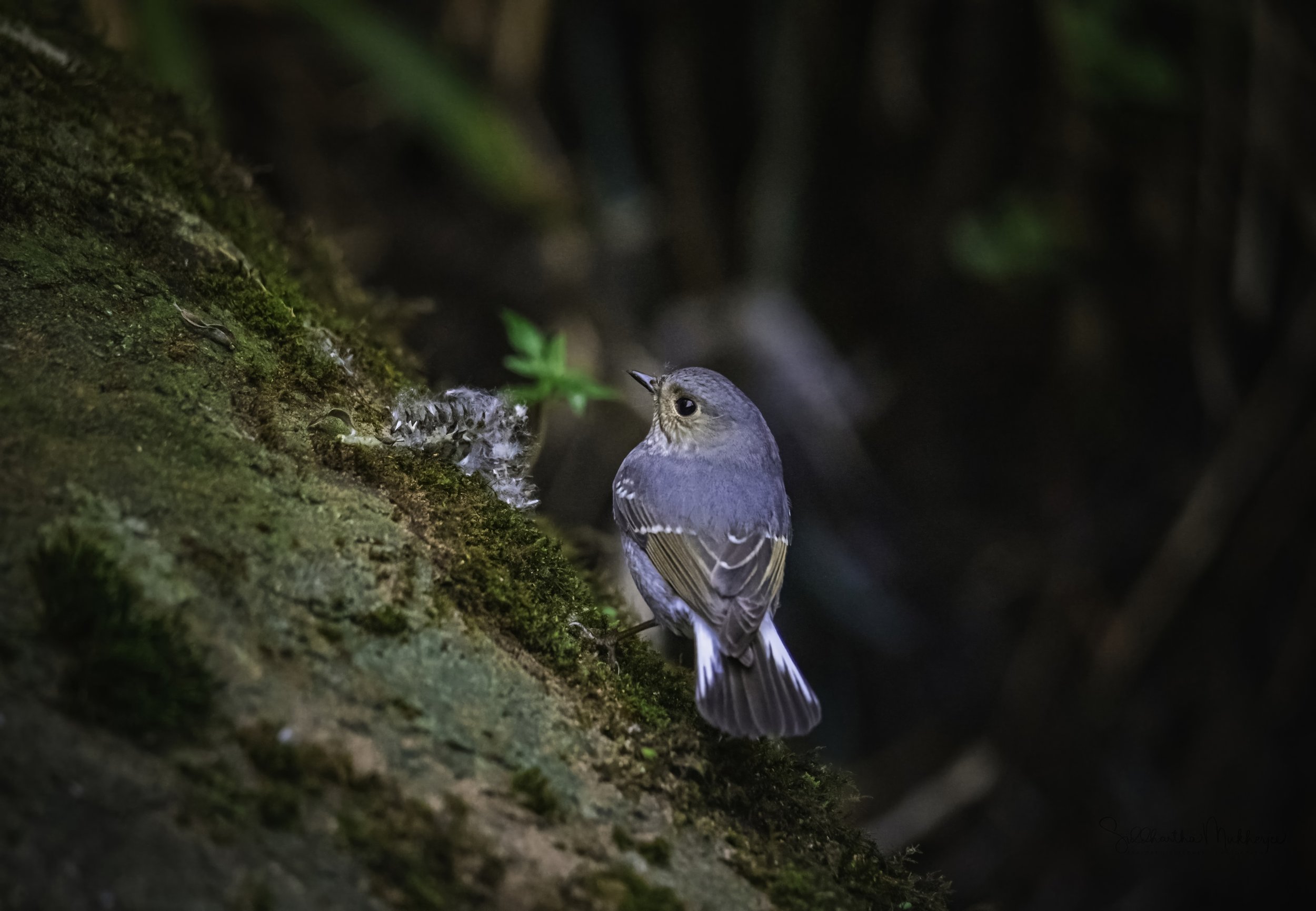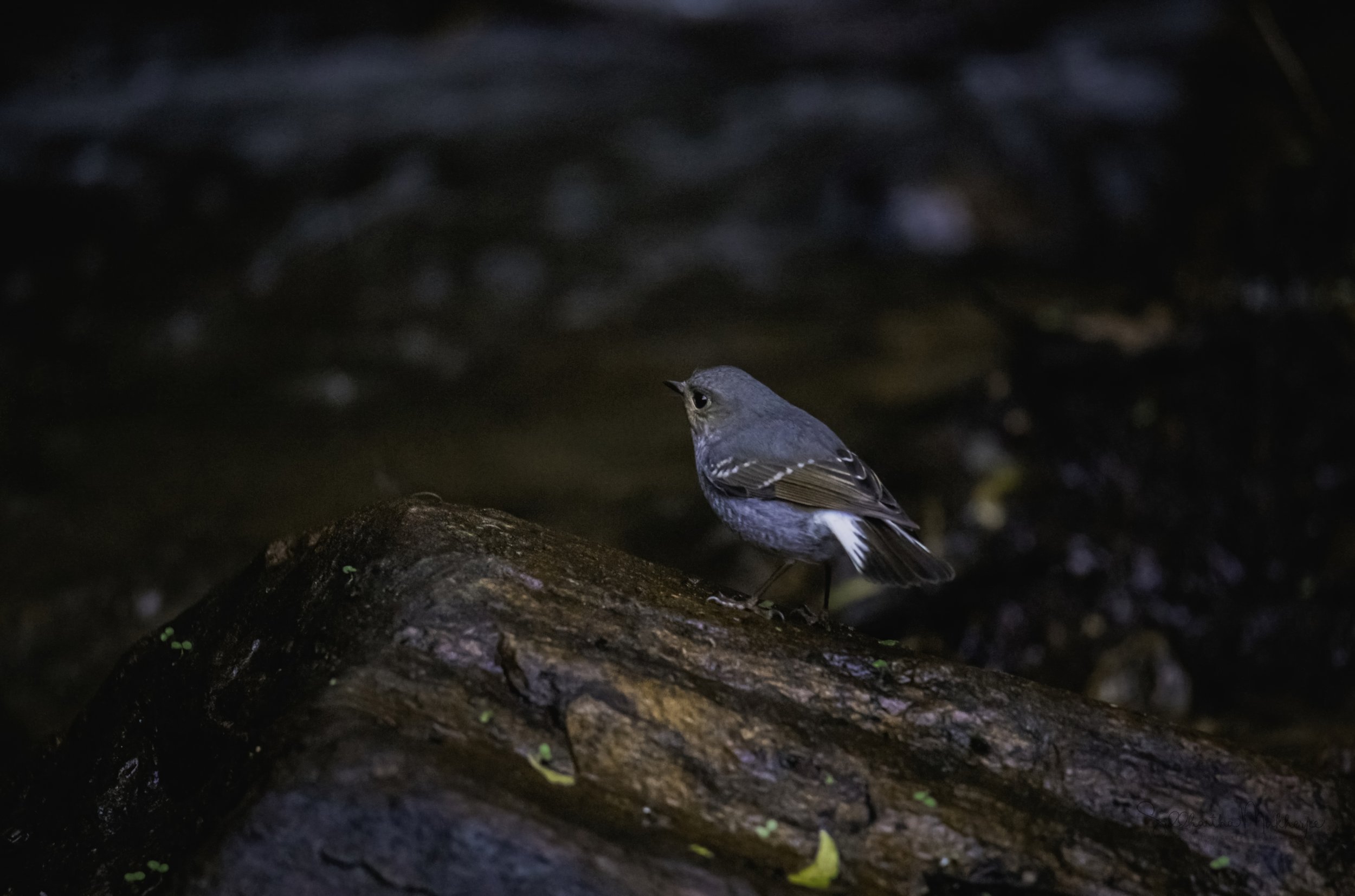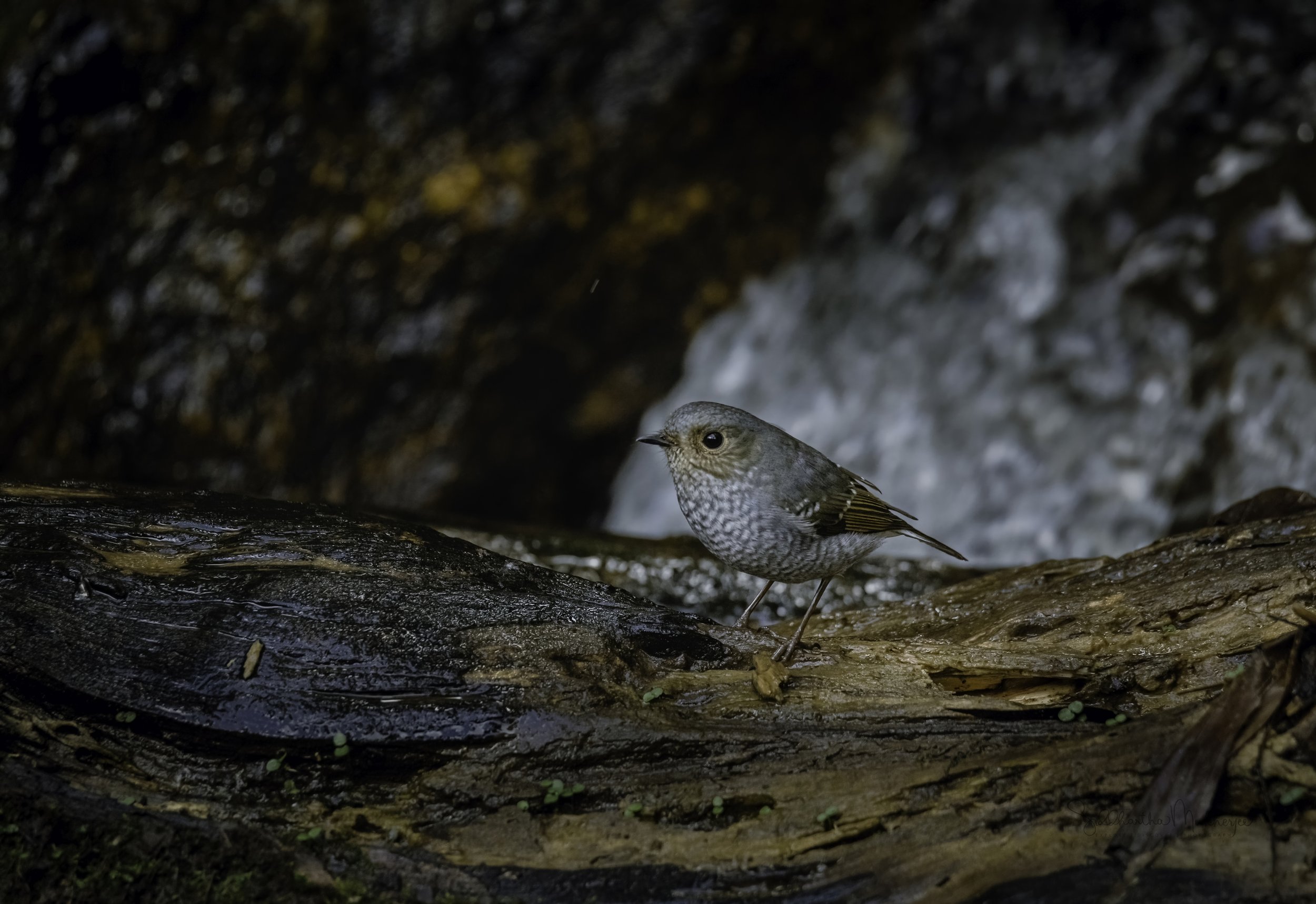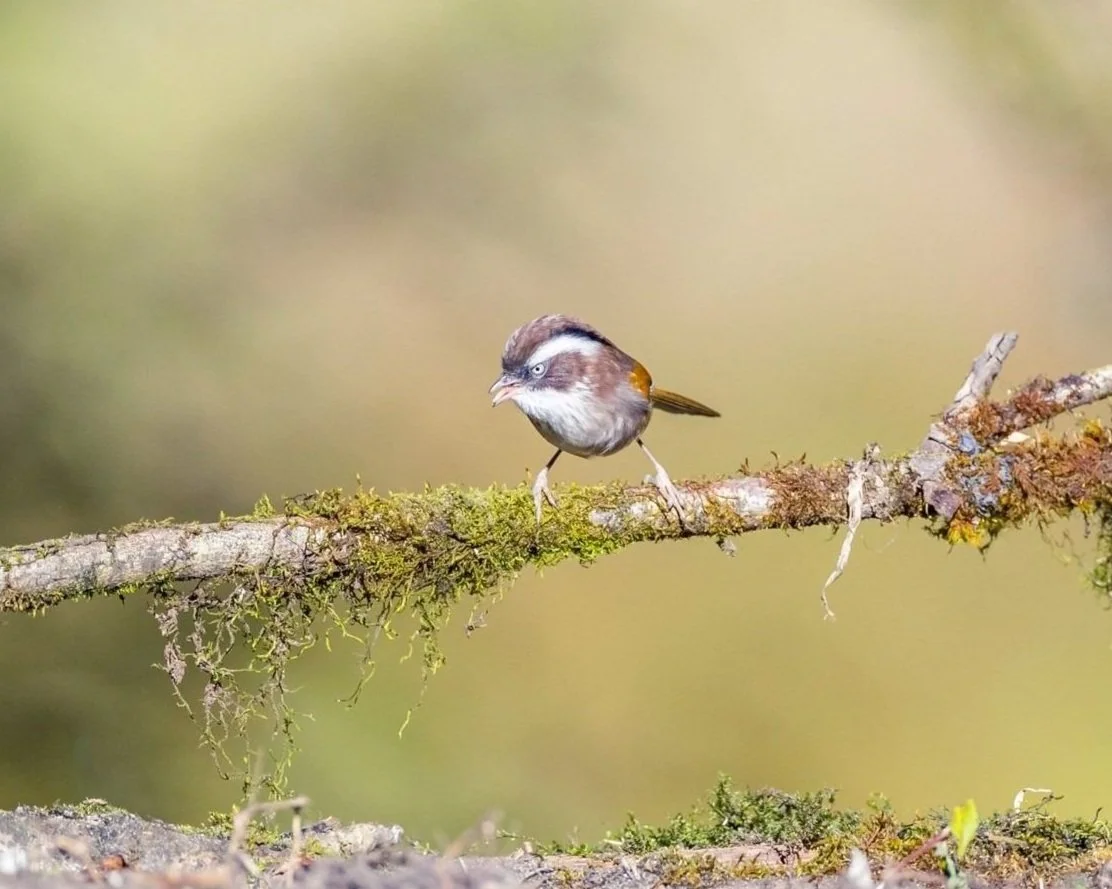Plumbeous Water Redstart
Phoenicurus fuliginosus
Doi Inthanon, Chiang Mai, Thailand
A while back I had written about the Birds on the Doi which was an overview of the four mountains in North Thailand and the abundant wild and bird life inhabiting them. Subsequently I have written about some of the multitude of birds I have seen and today too it is about another beautiful specimen from the banks of the River Klang on the slopes of Doi Inthanon - the Plumbeous Water Redstart.
About 685 kilometers to the north of Bangkok lies the former seat of the ancient Lanna Kingdom and is considered one of the most scenic provinces in the country given its mountain ranges, valleys, flora and fauna. A land of misty mountains and colourful hill tribes, a playground for seasoned travellers, and a delight for adventurers. Despite its relatively small size and blissful calm, Chiang Mai truly has it all, a city that is still firmly Thai in its atmosphere and attitude. It is the second-largest changwat (province) of Thailand. Bordered by Chiang Rai to the northeast, Lampang and Lamphun to the south, Tak to the southwest, Mae Hong Son to the west and the Shan State of Myanmar to the north. Located in a verdant valley on the banks of the Ping River, Chiang Mai was founded in 1296 as the capital of the ancient Lanna Kingdom. Today it is a place where past and the present seamlessly merge with modern buildings standing side by side with venerable temples. Of all the places I have visited in Thailand, Chiang Mai with its forests and mountains and the historic city of Ayutthaya are by far my favourites.
Plumbeous Water Redstart (Male)
The word Chiang itself is from North Thai, or Lanna, meaning town or city and Mai means new making Chiang Mai the New City as it was founded later than Chiang Rai, the earlier capital of King Meng Rai. The districts in the province are called amphoe, and sub-districts are called tambon. Another twist is the use of Nakhon (or Nakorn or Nakhorn), derived from the Sanskrit word Nagara, also means city, though strictly speaking it refers to a capital city such as Nakorn Sri Ayutthaya (more on Ayutthaya later). Indeed to emphasise its former status you may sometimes see Chiang Mai referred to as Nakhon Ping. Other common names of geographical features include mae (river) and doi which is north Thai for mountain - for example Doi Inthanon and Mae Ping.
The four Dois we spent our time on were Doi Inthanon, Doi Ang Khang, Doi Luang and Doi SanJu.
Doi Inthanon is Thailand’s highest mountain and a site of unique biological interest supporting a fascinating variety of vegetation and a higher bird species total than any other protected area. Of the total of 382 species of birds so far known from Doi Inthanon, at least 266 species are residents or were formerly residents on the mountain. Doi Inthanon is of particular conservation importance for those species which inhabit the moist hill evergreen forests of the upper slopes. Some, such as the Chestnut-tailed Minla and White-browed Shortwing, which are around the summit, occur in Thailand only on those few higher mountain summits which have considerable areas of hill evergreen forest above 1800 m. Doi Inthanon contains the only significant protected populations of such species in Thailand. The Ashy-throated Leaf-Warbler is found nowhere else in Thailand while an endemic race of the Green-tailed Sunbird (Aethopyga nipalensis angkanensis) is also completely confined to the summit. The Wachirathan Waterfall is one of the best sites for observing birds of fast-flowing streams. The Plumbeous Redstart and the River Chat often perch on boulders in mid-stream. The Slaty-backed Forktail can sometimes be seen. Among the many scarce arboreal birds to look out for are the Long-tailed Broadbill, Brown-throated Treecreeper, Green Cochoa, Purple Cochoa and the Black – tailed Crake.
We didn’t have the good fortune to see all the species on all the mountains, that would have been impossible, but we did rack up quite a number of species - about 95 of them.
For a print of this beautiful bird click on the button below to read my process and order a limited edition canvas.
‡‡‡‡‡
Plumbeous Water Redstart
The Plumbeous Water Redstart (Phoenicurus fuliginosus) is a passerine bird in the Old World flycatcher family Muscicapidae found in South Asia, Southeast Asia and China. The bird's common name refers to its colour which resembles lead. They tend to live near fast-moving streams and rivers. It is a small, sturdy songbird of fast-flowing streams and rivers which regularly ventures into waterside human settlements, around dams and canals. The male is a slaty gray-blue with a brilliant orange tail that is often fanned while the female and juvenile are gunmetal gray with scaly undersides and bright white on the upper half of the tail. High, whistled vocalisations can often be surprisingly audible, even over roaring water.
The plumbeous water redstart belongs to the order Passeriformes and the family Muscicapidae. It was previously placed in the genus Rhyacornis but was moved to Phoenicurus based on the results of a molecular phylogenetic study published in 2010. The species consists of two recognised subspecies – Phoenicurus fuliginosus fuliginosus and Phoenicurus fuliginosus affinis. The former was described by Nicholas Aylward Vigorsin 1831, while the latter was described by William Robert Ogilvie-Grant in 1906 and is only found in Taiwan. In China, the female and first-year male redstarts appear more brown at the top, leading to the possibility of classifying them as a separate race tenuirostris. What you see featured here is the Phoenicurus fuliginosus fuliginosus.
The plumbeous water redstart ranges from East Afghanistan and the Himalayas East to North East and Eastern China (North to North West Gansu and Inner Mongolia), South to North West Thailand, Indochina and Hainan. It breeds in S Korea and West Tajikistan (where it is possibly regular); non-breeding at lower levels and also Central and South Myanmar.
This redstart is typically 14 centimetres long in total, with an average weight of 22 grams for males and 18.8 grams for females. The male is slaty-blue, with rufous-chestnut tail and vent, black bill & pinkish tarsi. The female is slaty-gray above, with two white-spotted wingbars, white rump, black tail with white bases of outer rectrices; whitish with dense gray barring below. The juvenile is like the female but browner and stippled buff above. The subspecies affinis male is like the nominate while the female is a duller gray above, with narrower area of barring below, and slightly less white on rump and tail.
The bird is found in Afghanistan, Bangladesh, Bhutan, China, India, Laos, Myanmar, Nepal, Pakistan, Taiwan, Thailand, and Vietnam. Their preferred habitats are fast moving streams, nullahs and rivers with boulders that are shaded, as well as vegetation near riverbanks. Streams with higher populations of insects such as mayflies appear to be preferred. Margins and boulders of clear rocky streams and rivers both inside and outside forest, typically ranging from low-gradient streams 3–5 m in width to high-gradient broad, turbulent mountain torrents; occasional visits to adjacent trees and bushes.
They are typically found at relatively high elevations, with the ones living in the Himalayas seen between 2,000 metres (6,600 ft) and 4,100 metres (13,500 ft). However, they tend to descend to lower altitudes during the winter. They breed at 1000–4000 m in the Himalayas, 1200–3600 m in China, and 600–2000 m in Taiwan, wintering down to adjacent lowlands; in Nepal winter abundance is greatest at 600–1500 m. In winter, they have been noted to prefer rocky streams at head of reservoirs and concrete channels of water catchments in Hong Kong; in Nepal, males noted on main wide rivers, while females occupied narrower, well-wooded tributaries.
The plumbeous water redstart is very protective of its habitat and will be extremely confrontational to any trespasser on its territory. In order to catch flies in rivers, it flies vertically until it is at least 20 feet above the water, before gliding down in a spiral back to the same place. Insects, notably caddis flies and their larvae, mayflies and midges; occasionally berries (including Berberis) and seeds. In one study in China, 50 out of 58 stomachs examined contained insects and their eggs, mainly coleopterans, lepidopterans, dipterans, hymenopterans, orthopterans, Odonata, and hemipterans (Pentatomidae), while 33 held plant material, including seeds, fruits and leaves; spiders also taken. they make short flycatching sallies from rocks or overhanging branches, snatches aquatic prey from surface of water, hunts on foot along the water’s edge and occasionally wades in shallows in search of water-borne prey. In study in Nepal, 57% of observations of foraging position involved mid-river rocks, 34% marginal rocks, 6% riparian ground and 3% shoals or marginal ground, with 75% of prey picked in aerial sally, 13% from shoals or mud, 10% from rocks and 1% from riparian ground or vegetation; main food small flies and midges (Chironomidae, Simuliidae), large dragonflies, butterflies and bees. In study in Taiwan, males foraged for 67% of the time in stream-surface habitats, although these constituted only 19% of total area available to them. Both the male and the female continuously open and shut their tails scissorwise, and wag it up and down. These birds remain active into deep twilight.
Their song, usually heard from large rocks mid-stream or in a short aerial parabola from rock to rock, is a shrill creaky insistent metallic jingle lasting 2 seconds, rising in pitch, like a chirping cricket, “striiii-triiii-triiii-trííííh”, repeated 4–7 times; occasionally heard also in winter. The call a sharp, strident ascending “ziet, ziet”, often combined with “tk tk” clicks.
The plumbeous water redstart has been placed on the Least Concern category of the IUCN Red List, as the population has remained stable throughout the last ten years. The size of its distribution range is over 5,100,000 square kilometres (2,000,000 sq mi). Not globally threatened. Common in N Pakistan and India; fairly common to common in China; scarce to locally common in SE Asia. On main rivers in Nepal, one bird (predominantly male) found every 50–60 m or so in winter.
‡‡‡‡‡
Related Posts

























